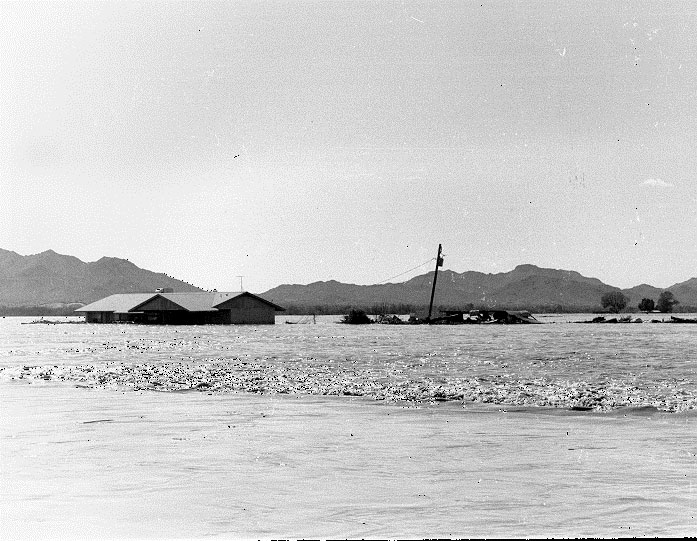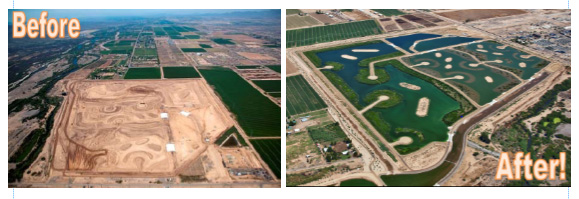History of Tres Rios
Salt River
The Salt River runs 200 miles from the White Mountains in eastern Arizona to the Gila River. Despite the dry appearance you see today, it was a source of frequent flooding and loss of property.

Why was Tres Rios Constructed?
- Flood Control
- Habitat Restoration
- Recreation and Environmental Education
How was Tres Rios Constructed?
In 2000, the U.S. Army Corps of Engineers (ACOE) received approval from Congress for the Tres Rios Ecosystem Restoration and Flood Control Project. The City of Phoenix partnered with the ACOE to improve and enhance a seven-mile long, almost 700-acre section along the Salt and Gila Rivers in southwestern Phoenix. The project received 65 percent of the funding from the ACOE, with 35 percent coming from the local sponsor, the City of Phoenix and the Sub-Regional Operating Group Members (Scottsdale, Tempe, Glendale, and Mesa). Technical and financial assistance was also provided by the Flood Control District of Maricopa County. Construction lasted from 2007 – 2012.
Wetlands in the Desert?
Former agricultural fields were graded and contoured into the wetlands you see today. Once the depths were just right, plants including rushes, sedges, arrowhead, cattail, and floating aquatics were installed to recreate wetlands of the southwestern United States.

Restoring Riparian Habitat
Most of the rivers in the southwestern United States have become choked with a non-native plant, salt cedar, or tamarisk. This plant was originally brought into this country in the 1800s as an ornamental plant, and for stream bank stabilization. In the 20th century, staff started to realize the danger of importing foreign plants into the fragile desert environment. Sonoran Desert wildlife has lived with native plants for millions of years.
The plant and animal communities have evolved together, with the animals using the plants for shelter and food, and the plants using the animals for seed dispersal. Native plants are perfectly suited to sustain native animal populations. Now, the salt cedar has displaced many of the native plants. The salt cedar invasions have thrown off the natural balance between plants and animals, making survival more difficult for the native wildlife.
To reverse the process, Tres Rios staff removed large tracts of salt cedar and replaced it with native cottonwood/willow riparian corridors. In some areas, where the salt cedar is very thick and will be impossible to replace, the river sediment will be dug down and filled with water. This will prevent regrowth of the salt cedar, provide habitat for waterfowl, and offer a clearer channel for flood flows to utilize.
